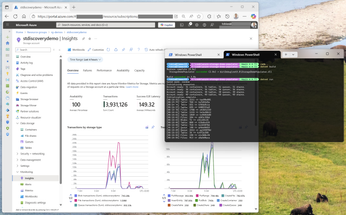The future of Forms with SharePoint and Office 365
Introduction
**Update 2015-02-24
** As per Becky Bertram’s recent blogpost about Recap of Conversation with Microsoft’s Sonya Koptyev regarding the Future of Forms, there’s been some clarifications on the topic of Forms. Finally.
Recently Microsoft announced that InfoPath as a forms solution for SharePoint and Office 365 were to cease to exist. In my opinion this is great, because I never really liked InfoPath and it wasn’t very widely adopted in any organization I’ve ever worked with. There were benefits with InfoPath, but nothing we couldn’t do as developers or that the end-users couldn’t do themselves using free form-plugins from the web. Purchasing an enterprise-license just for the sake of forms was a really hard bargain to root for.
Read more about the announcement from Microsoft: Update on InfoPath and SharePoint Forms
We have InfoPath today, what do we do?
With the decision to retire the development of InfoPath, what decisions do we need to make in our organizations?
InfoPath 2013 & InfoPath 2013 for SharePoint on-premises
If you are utilizing forms today with InfoPath 2013 client or using the InfoPath 2013 browser forms features, you are still fully supported until 2023, so you have a lot of time. Right now, I’d wait until further announcements (see further down in this article).
Office 365
If you are utilizing forms today in Office 365, you have at lease until the next major release of Office (and then some) before it’s unsupported. My take on this is that since we’re in the cloud-first world now, the updates will roll out on Office 365 long before on-prem, which also makes it important to listen to Microsoft’s guidance here. As soon as they decide to cut the support, Forms might stop working in Office 365. But as mentioned, you’ve got some time until then.
Migrating InfoPath forms?
Microsoft is cutting InfoPath. We can live with that, but how do we move our current forms into the replacement technology? Microsoft mentioned “We don’t know yet, we are evaluating various options to aid in migration” and “Third parties may provide tools, or even support running InfoPath forms into the future“.
So the answer right now is to sit tight and don’t make any hasty decisions – if you don’t have an immediate need to replace InfoPath for whatever reason, let the forms live on until further notice.
What does the future look like for Forms with SharePoint and Office 365?
We will soon see some new replacement technologies that will be the ground zero for Forms with SharePoint and Office 365. Microsoft said that any new Forms features for on-premises SharePoint will not be launched until the next version. So if you’re eager to try something that doesn’t already exist, you once again see that the cloud-first strategy is in full effect.
Here’s the key announcements:
Excel Surveys
Albeit not the newest technology, Excel surveys will be a large part of creating forms. Excel Surveys are not specifically tied to just SharePoint but can have a broader usage.
User Scenarios
- Form Design: Design Forms in Excel Online with Excel Surveys
- Form Completion: Web
Timeframe
- Office 365: Continuously shipping
- On-premises: Included with Office 2013
List Forms (FoSL – Forms on SharePoint Lists)
Update 2015-02-24:
FoSL is Dead (read more here http://www.savtechsol.com/Education/BeckysBlog/Lists/Posts/Post.aspx?List=7a1cfe30-f6b0-41c7-981d-05069e5dd421&ID=224)
List Forms, or FoSL which means Forms on SharePoint Lists and pronounced “Fossil”, looks pretty slick. This is where they enable an easy creation of forms for specific lists. We will see a lot of improvements and developments of this technology, and I would argue that this may be the most popular and widely adopted forms feature if the promises are kept.
User Scenarios
Form Design: FoSL, Forms designed on SharePoint ListsForm Completion: SharePoint
Timeframe
Office 365: Between summer 2014 and October 2015On-premises: Next version of SharePoint (SharePoint vNext)
Structured Documents
A bit surprising to learn that Structured Documents is a type of form technology that enables you to create modern forms in Word.
User Scenarios
- Form Design: Word
- Form Completion: Word
Timeframe
- Office 365: Current plans target the end of 2014
- On-premises: Current plans target the end of 2014
App Forms
App Forms are forms that you design in Access and complete in SharePoint. This is a type of forms technology you would use with more complex forms with multiple tables of data and multiple types of forms. I predict that you can create some pretty fancy stuff with App Forms, but we’ve yet to see what it holds for the future.
User Scenarios
- Form Design: Access
- Form Completion: SharePoint
Timeframe
- Office 365: Continuously shipping
- On-premises: Included with Office 2013
When should I use App Forms vs. FoSL?
- Access/App Forms are best suited for self-contained apps with multiple related tables and multiple forms.
FoSL is better suites for single forms with a single table, which is a SharePoint list.
I noticed that Visual Studio wasn’t mentioned as a form design tool, why?
Visual Studio is a developer technology, for people who develop stuff. Microsoft is deliberately targeting no-code users. In other words: Microsoft wants to target the Information Worker, not the developers.
I think this is a great decision, and I’m hoping that we can see some of the aforementioned form technologies flourish and get a wide adoption by the users. Simplicity is key.
We can’t wait for the new form replacements, we need them now!
All the new features that are being announced sounds pretty hot, but since we can’t use them as we would like right now, what alternatives do we have?
Mark Rackley created a tool on CodePlex called Forms7, which works with SharePoint 2007, 2010 and 2013 alike. Based on traditional HTML and jQuery, you can easily integrate it essentially anywhere.
I urge you to check it out if you are in a need for forms quickly. All the data is stored in SharePoint lists, so you can easily access all the information at any time.
Summary
Microsoft have announced a set of new replacement technologies in the area of forms. All the aforementioned technologies seems like they can have some pretty nice use cases. As for existing InfoPath customers, I would sit tight in the boat for a while to see what Microsoft announces in the future. If you are thinking about implementing forms for the first time, take it for a spin with some industry experts to get input on what your goals are and what would benefit you in the long-term and short-term respectively.
Microsoft has a new philosophy in recent years. Open source and open communication. I love this approach, and with that you can also see that there’s a User Voice site available for sending input regarding Office Forms vNext. If you have input, get in there and publish it so the Office team can take action!.
Enjoy!








Recent comments